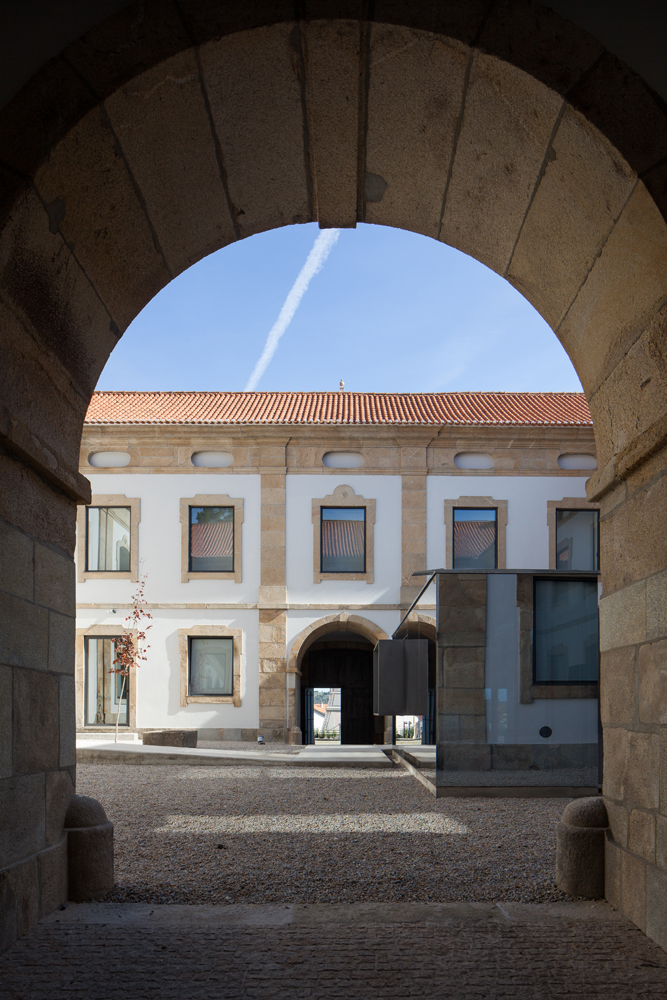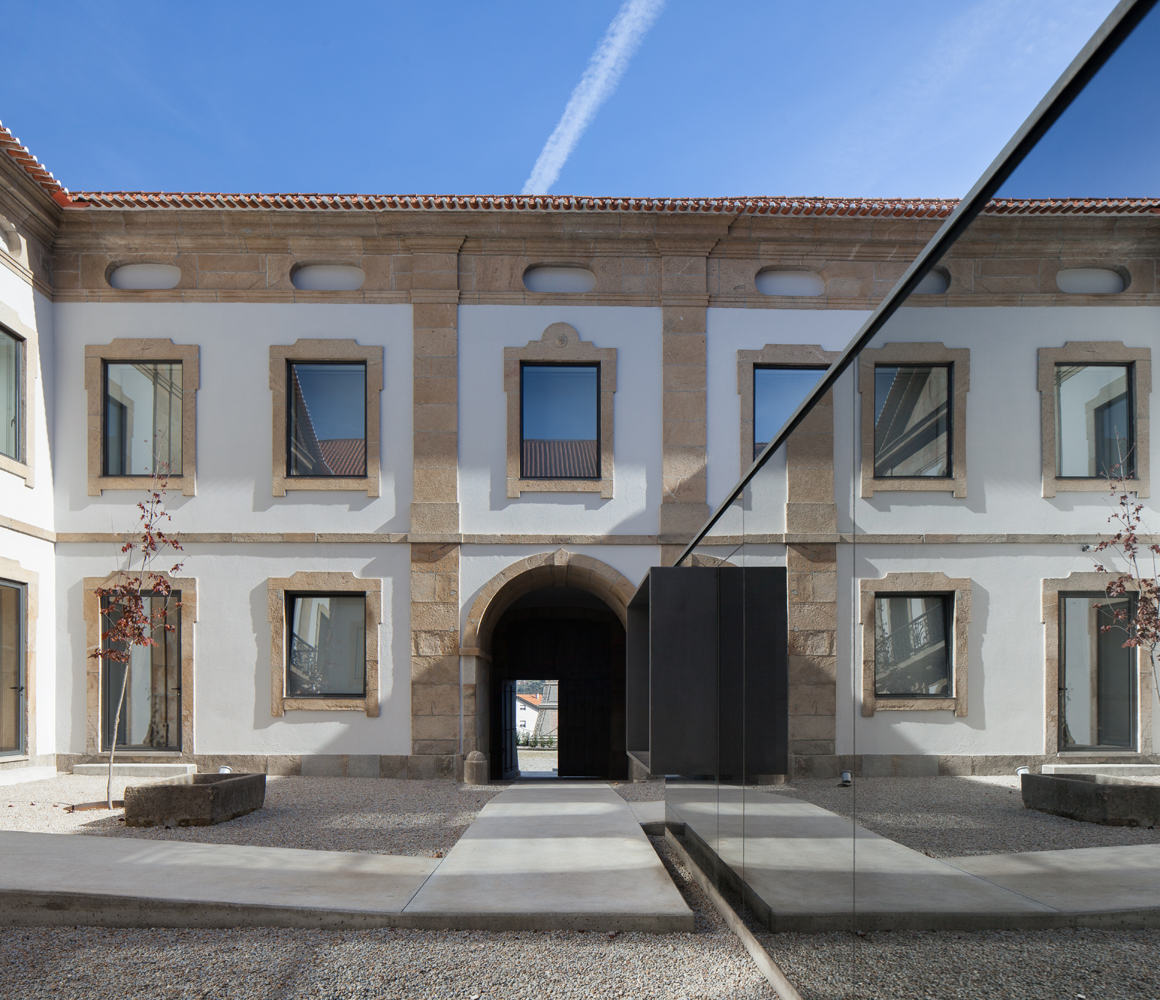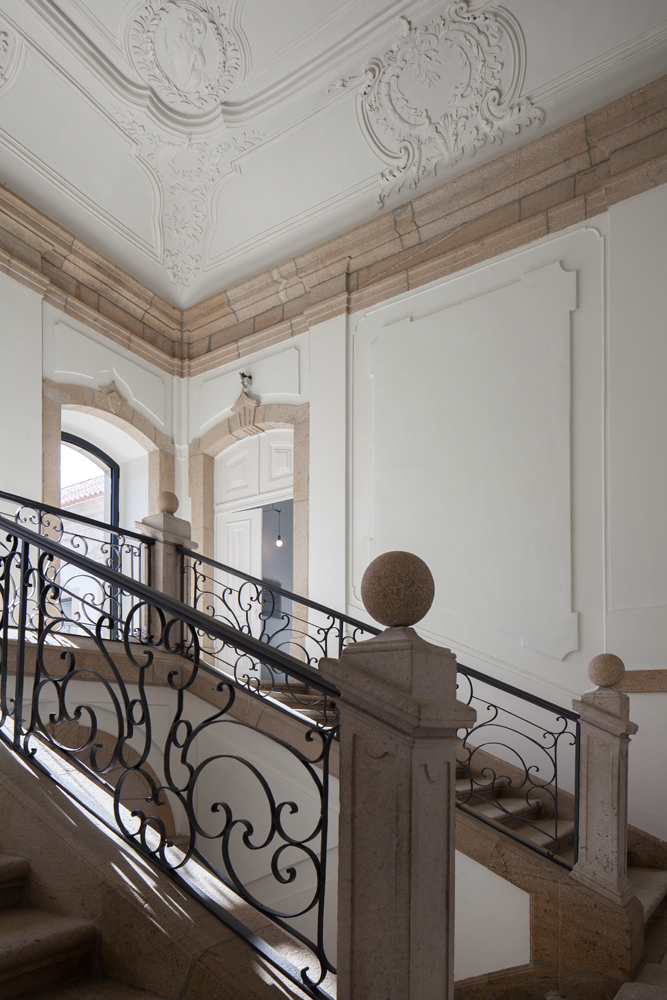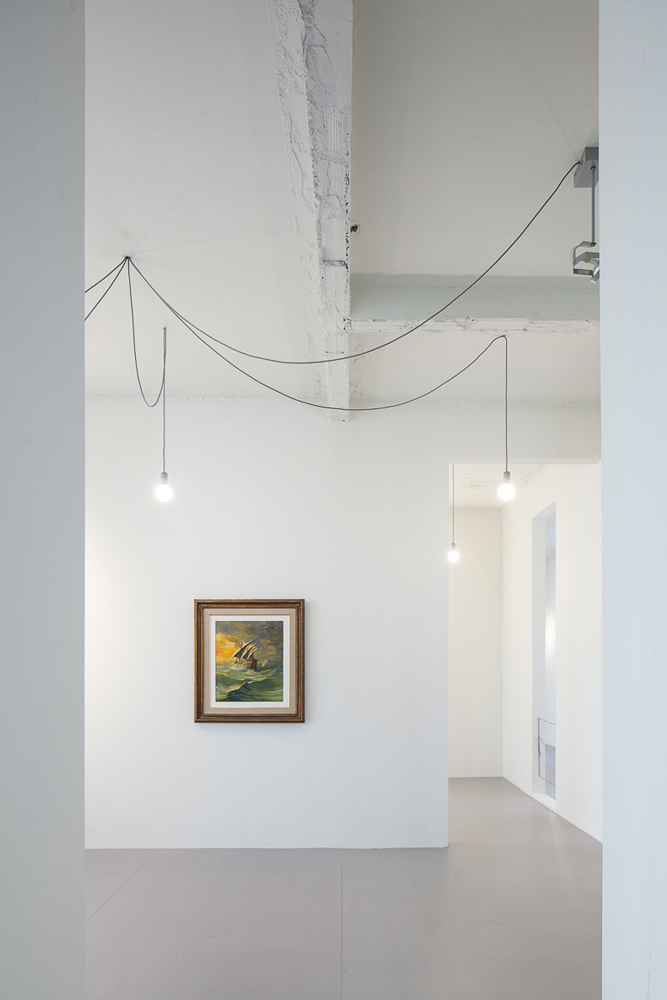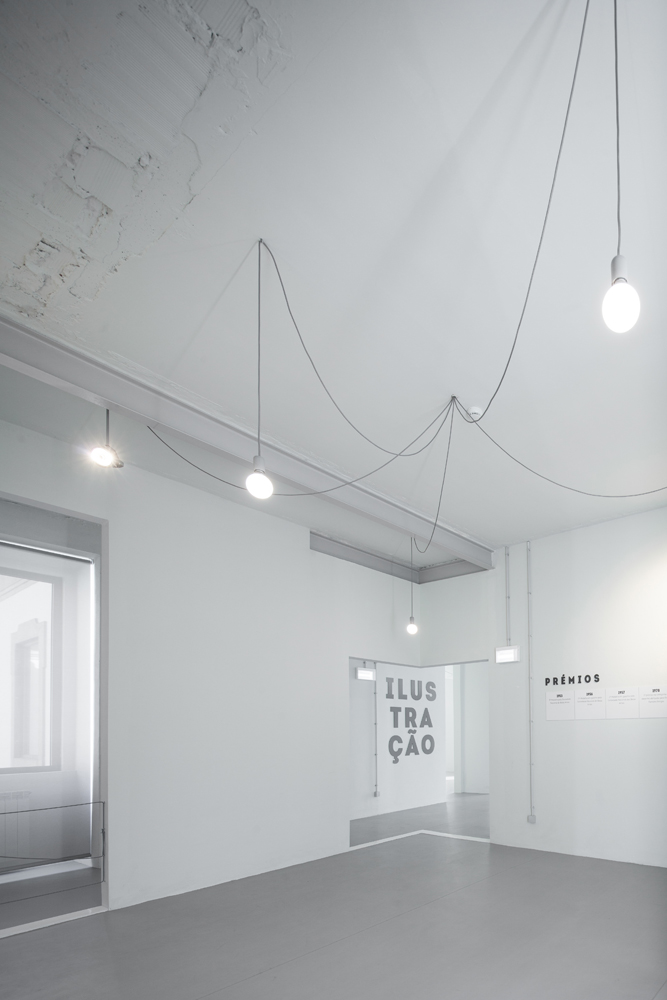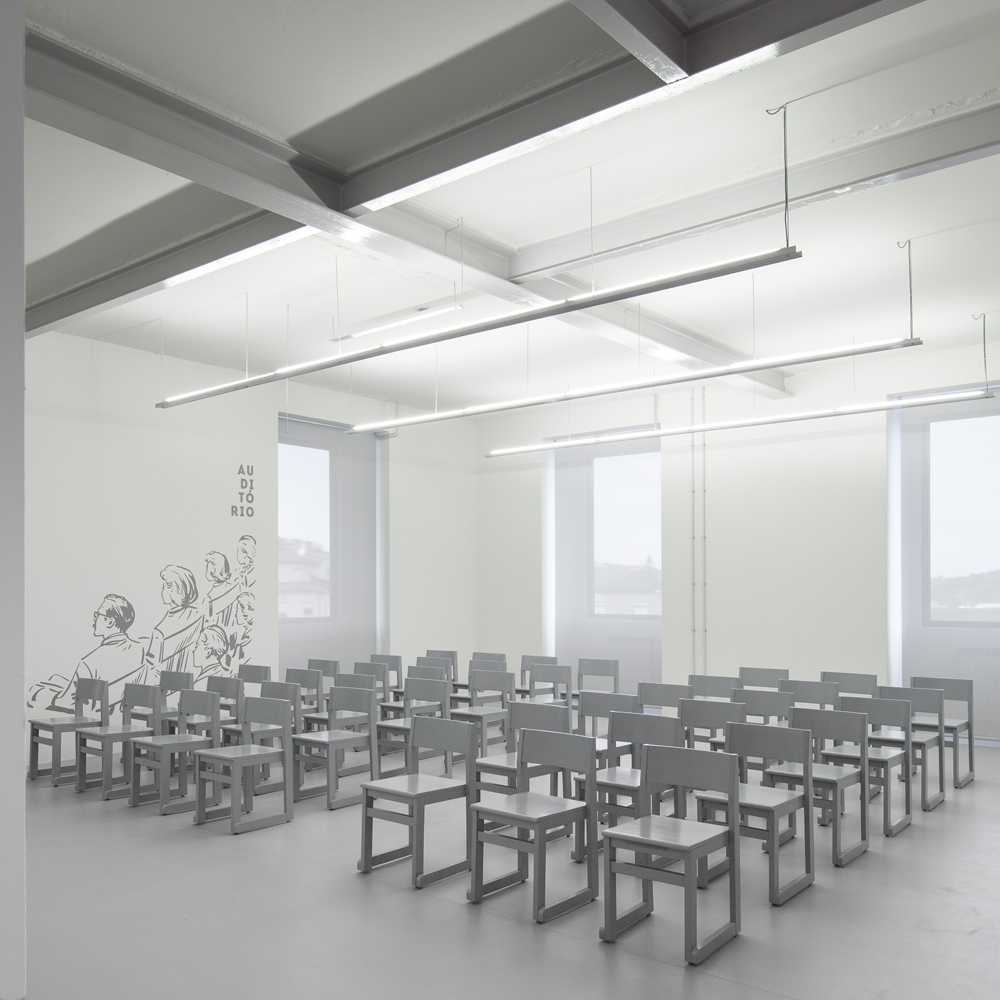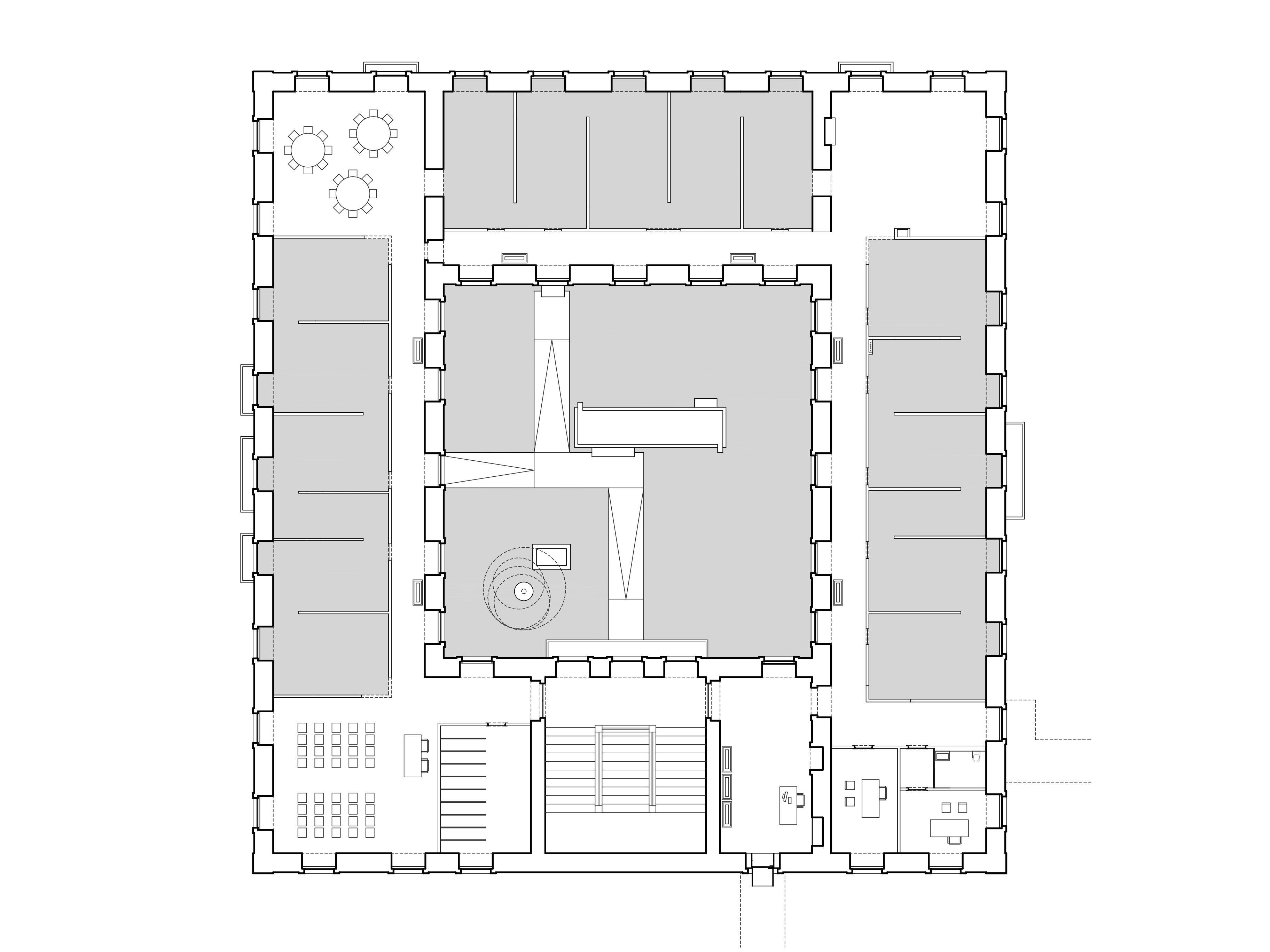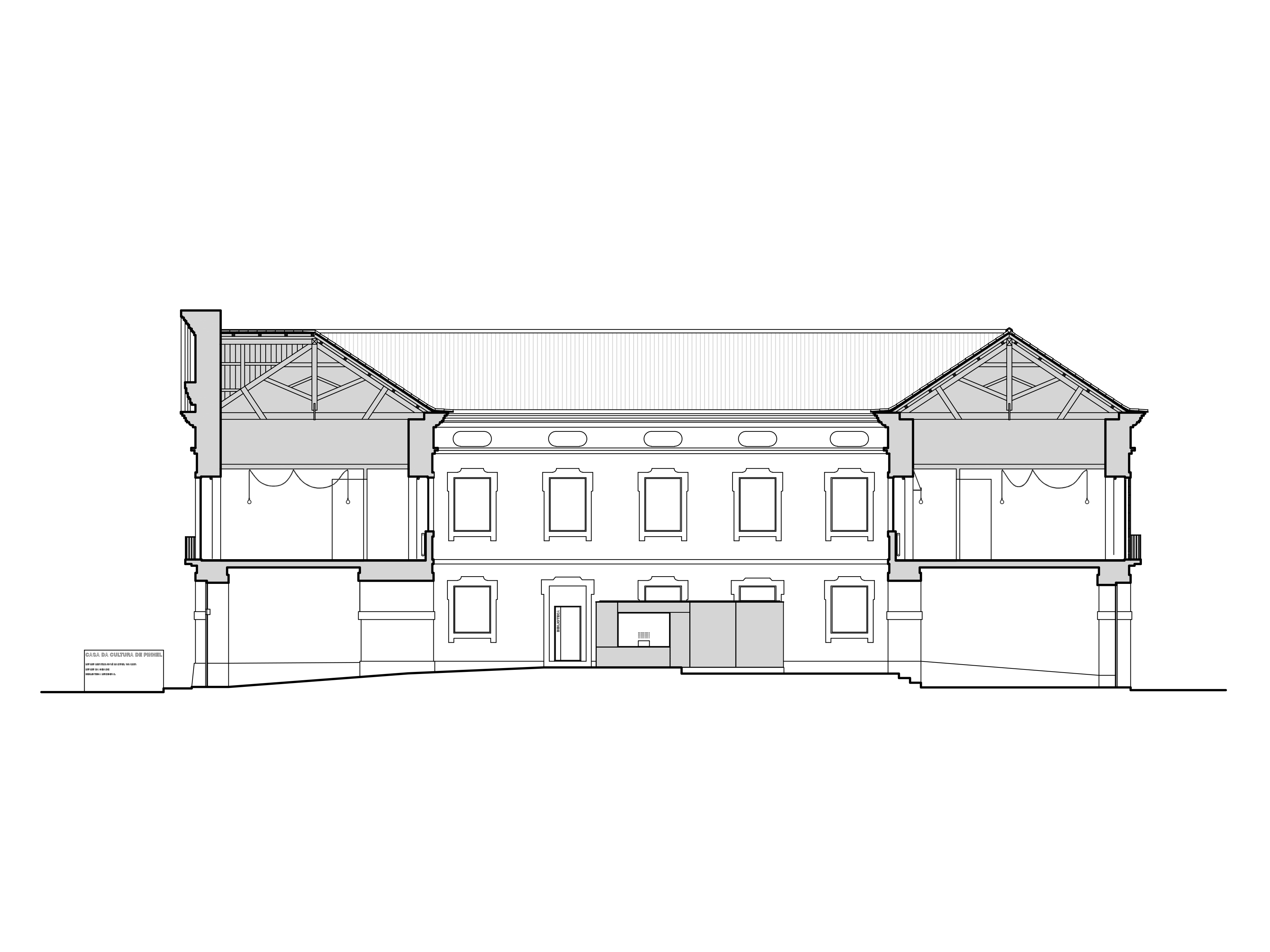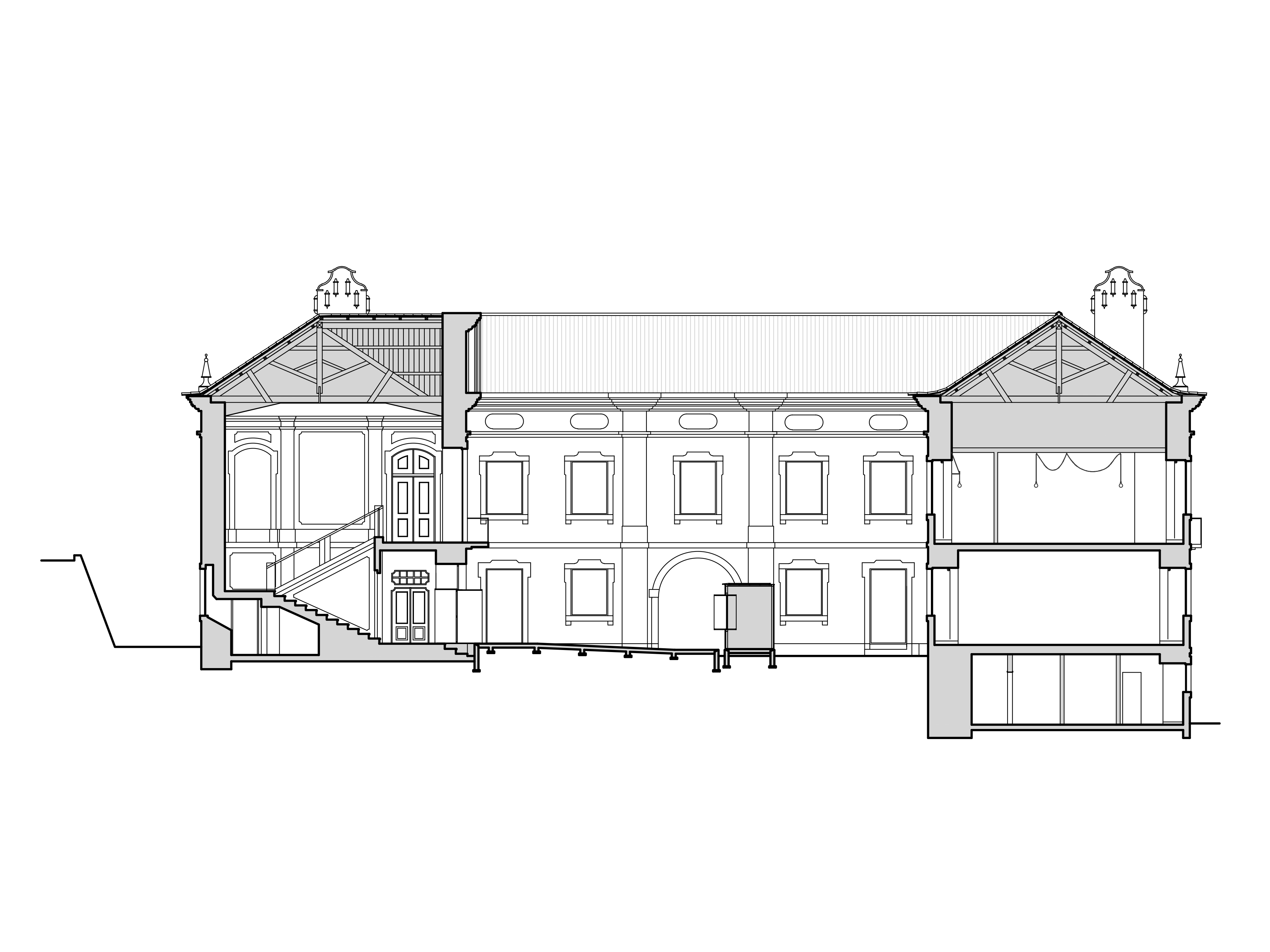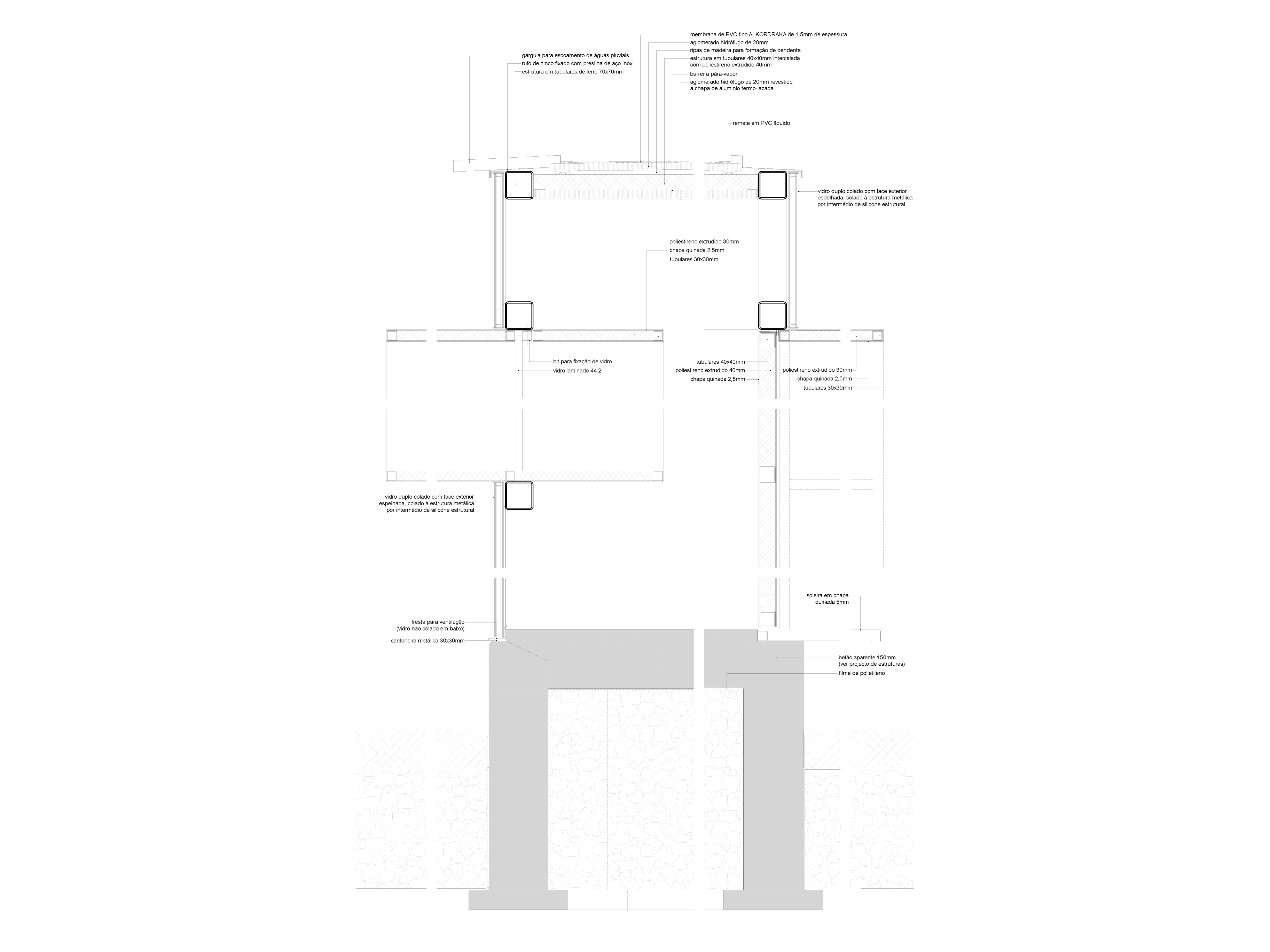12-14,
North
Pinhel House of Culture
The creation of Pinhel House of Culture presented an opportunity to remodel the first oor and courtyard of the town’s former Bishop’s Palace, an 18th century building that had undergone countless modifications over time to adapt it to its many uses (bishop’s seat, military and police barracks, a school building and a students’ residence). The palace had become used to being in a constant state of evolution and disfigurement. The design was thus conceived as one more phase in that evolution – but this time in the other direction, restoring the coherence that had been taken from it over the course of the 20th century.
A combination of the critical state of the building’s interior and the need for an economical and lasting intervention led to demolition and spatial exploration of the textures that remained becoming both the theme and concept for the design project.
Accordingly, the design work focused on striking a balance between recovery and maintenance of the original features and an operation of removing, cleaning and demolishing of the superfluous elements that had led to the interior’s gradual loss of character.
The demolition work was followed by a chromatic uniformisation of all surfaces, respecting the diverse textures and leaving scars from the past untouched. All new elements were treated as additions in line with pre-set rules, restoring the building’s original sense of rigour.
As a final step, in coherence with the design strategy, the furniture was also stored or new pieces were built from recycled wood from the demolition work.

